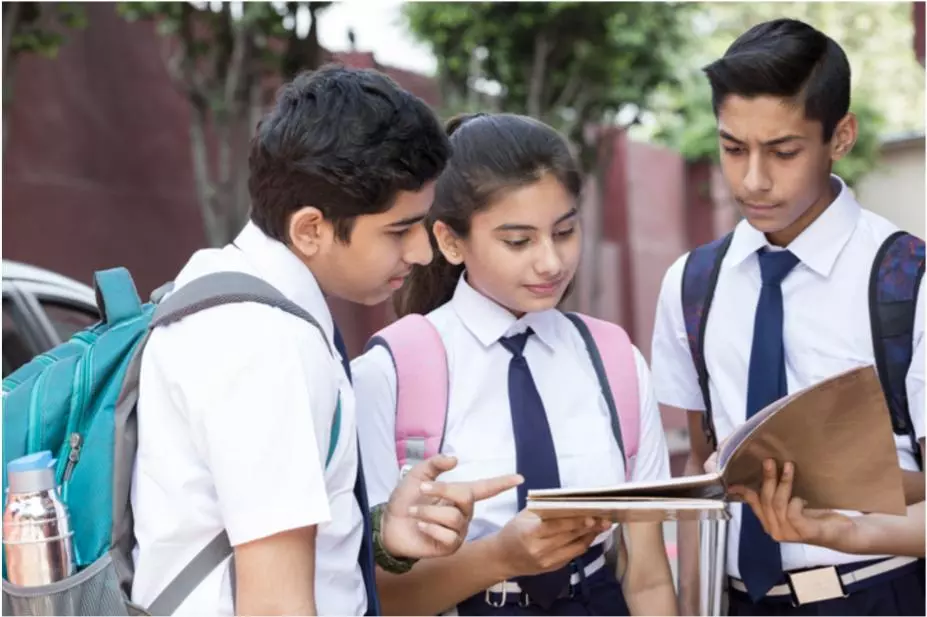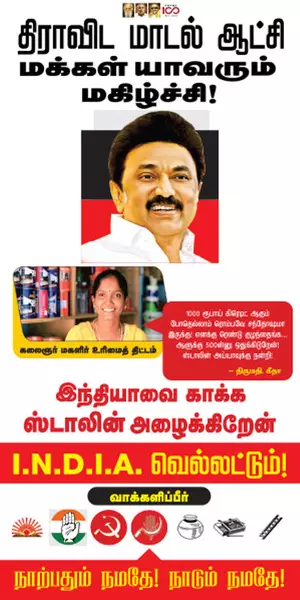
New curriculum plan ticks the right boxes, but are schools ready to bite the bullet?
National Curriculum Framework proposes progressive changes in secondary school education; schools may find them beyond their scope

The National Council of Educational Research and Training (NCERT), which advises the Government of India on policies and programmes to improve school education, has released the latest National Curriculum Framework (NCF) for School Education. The last time NCF was revised was in 2005.
Among a vast range of measures for the entire school spectrum, the NCF document proposes some major changes for students at the secondary stage of schooling, between classes 9 and 12.
Eight curricular areas
The NCF recommends eight broad curricular areas: Humanities, Mathematics & Computing, Vocational Education, Physical Education, Arts, Social Science, Science, and Inter-disciplinary areas for classes 9 to 12. To clear Class 10, a student must pick 2 courses in each curricular area. This means he/she will write 16 papers – across 8 subjects – to clear the Grade 10 board exam.
Also read: NCERT to bring balanced perspective of all genders in new curriculum
In Grades 11 and 12, this changes a bit. Disciplines are introduced within the curricular areas – such as history (in social science), physics (in science), and commerce (in interdisciplinary area). Each discipline would be marked with specific competencies and learning outcomes. A student must choose disciplines from at least three curricular areas (out of eight) and four courses within each discipline. To complete Grade 12, a student must complete 16 choice-based courses.
For instance, if a Class 12 student chooses ‘Humanities’ (curricular area), and Philosophy (discipline) within that, he/she must complete four courses in Philosophy. The student could then choose ‘Social Sciences’ as the second curricular area and do four courses in, say, Geography (discipline). ‘Science’ could be his/her third curricular area. The student could choose to do four courses in, say, Biology (discipline).
With three curricular areas already chosen, he/she now has the choice for his/her fourth set of courses. Here, the choices could be from one of the three curricular areas already chosen or from a different one.
Offering a wide choice
Well, what about the capacity of the schools to offer such a wide choice of subjects? Here, NCF doesn’t offer any choice to schools in curricular areas offered to students. The design and learning standards have been articulated in the NCF.
However, for Grades 11 and 12, NCF mandates that secondary schools must offer at least one curricular area in three categories:
- Category 1: Humanities/Social Science/ Science/Mathematics and Computing
- Category 2: Inter-disciplinary Areas
- Category 3: Arts/Sports/Vocational Education
Most importantly, the student will be assessed through what NCF calls ‘Modular Board Examinations’. He/she would have the choice of writing board exams at least twice a year. NCF makes this out to be a step in the direction towards the eventual goal of an ‘on demand’ examination, with a student deciding when to be tested in a subject.
Education: PARAKH may assess students better, but can it address learning gaps?
Surely, the proposed measures sound progressive. Now, what would it take for the schools to implement them? What challenges exist beyond the schools’ control?
Lack of trained teachers
NCF, in passing, acknowledges that schools might struggle to offer the entire range, which in turn, would limit the choice for the students. But the troubles that lie ahead of implementing any of these measures go far beyond what NCF acknowledges in the report.
The first hurdle is the lack of trained teachers to deal with the changed landscape of curricula and disciplines. According to UNESCO’s State of the Education Report on India (2021) aptly titled ‘No Teacher, No Class’, the school system has a whopping deficit of over 1 million teachers (at the current student’s strength). This need is likely to grow, says the report. The shortage is particularly acute in areas such as music, arts, and vocational education. About 1.10 lakh schools, accounting for 7% of all schools, function with a single teacher. About 89% of such schools are in rural areas.
Dealing with this level of shortage of human resources calls for planning, funds allocation, finding the right talent, training them in pedagogies as outlined by NCF, and more. Unless that is done, the schools may not have the courage to take the first few steps towards implementing the progressive ideas of NCF.
Secondly, the outlook of teachers on assessments. Consider the so-called ‘Formative Assessment’. While NCF says, “this should be part of the teaching-learning process as an assessment for learning and assessment as learning”, the universal practice is to give marks, a practice discouraged by NCF.
Assessment for and as learning?
Well, NCF is right — it is learning meant for teachers. Formative assessment should help a teacher find out where the students are in learning levels and re-calibrate her pedagogy to help them learn better and fill gaps. In short, it is more of a test for teachers than for students.
Watch | Indian education: Why governments can’t rely on ASER report alone
However, given the universal notion of making it out to be a test for students, in which they must ‘pass’ with certain marks, it will take a massive effort to make the schools and teachers see it very differently.
Thirdly, the ‘modular’ exams at least twice a year. This is a common global practice. Overseas boards operating in India such as Cambridge Assessment International Education, which is increasingly popular in metros, have been conducting their board exams (GCSE, AS, and A levels) twice a year — in June and November. The upper-middle-class and rich students in cities, who typically take these exams, try to clear them in November of the school final year so that they have many months to prepare for competitive entrance tests in May-June of the subsequent year.
Doubling cost, efforts for logistics
However, if these were to be implemented by all school boards, it requires doubling the cost and efforts for the logistics of the entire process from selecting experts to setting exam papers to conducting exams and evaluating answer sheets.
In 2019, a deficit of over Rs 200 crore in conducting board examinations for classes 10 and 12 forced the Central Board of Secondary Education (CBSE) to hike fees for candidates. The costs would have gone up by now and the story of state boards is unlikely to be any different. With a modular exam model, the cost would at least double.
Education | Board exam fever? The scores barely matter for admissions; here’s why
Of course, it is possible that at some point in time, the proposed national assessment regulator PARAKH (Performance Assessment, Review, and Analysis of Knowledge for Holistic Development) will take over the entire exercise. However, given that education is still on the concurrent list and most states have their boards, it will be fraught with difficulties and possible lawsuits.
Twice a year exam to benefit whom?
Also, beyond a very small group of elite students preparing for entrance tests to colleges, who is this step of holding exams twice a year going to benefit? Most students in India, who go to government-run or aided schools, depend only on their textbooks and teachers to pass exams. They cannot afford private tuition or support material to pass board exams. They don’t seem to have any choice in when to take the board exams. The schools for such students are unlikely to make any change in the foreseeable future.
Consider this. College admissions happen only once a year. NCF doesn’t have the mandate to make colleges aim for admission to undergraduate courses a few times a year as it happens in the West. As long as this asymmetry – once-a-year admission to colleges and twice-a-year board exams – remains, it is unlikely to ease the burden of students facing the heavy psychological choking point of board exams.
(The author consults in the education domain. He can be reached at srihamsa@gmail.com)
(The Federal seeks to present views and opinions from all sides of the spectrum. The information, ideas or opinions in the articles are of the author and do not necessarily reflect the views of The Federal)





